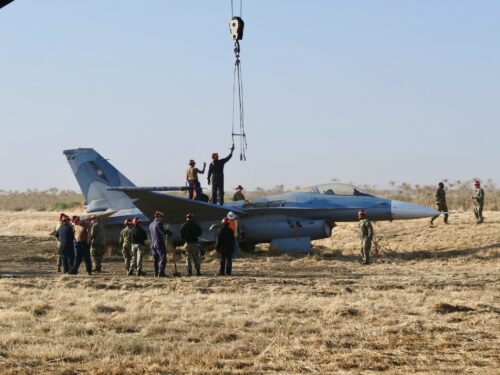In an adrenaline-fueled and emotionally charged documentary series, National Geographic, in collaboration with Zinc Media’s Rex, will venture into one of the most demanding and secretive programs within the U.S. Navy. The series, tentatively titled Top Gun: The Next Generation, offers viewers unparalleled access to the U.S. Navy’s Advanced Flight Training Program.
Category: Navy
U.S. Navy NAWDC F-16A runway excursion at NAS Lemoore
A U.S. Navy F-16A departed the runway at NAS Lemoore during a routine training mission last week. The jet, #90-0945, is assigned to NAS Fallon’s Naval Strike Air Warfare Center aka Top Gun.

Photo: U.S. Navy
Continue reading “U.S. Navy NAWDC F-16A runway excursion at NAS Lemoore”
U.S. Navy funds three-year project with Texas A&M to develop autonomous VTOL aircraft for ship landings
The U.S. Navy has embarked on a groundbreaking collaboration with Texas A&M University to pioneer the development of fully autonomous Vertical Takeoff and Landing (VTOL) aircraft capable of landing on moving ship decks. The three-year project, funded by the Navy, aims to create a robust solution that could revolutionize the way aircraft land on naval vessels.

Petty Officer 3rd Class Hailey Servedio, Public domain, via Wikimedia Commons
MQ-4C Triton returns to Guam, strengthening maritime security
The United States Navy’s MQ-4C Triton unmanned aircraft system (UAS) has touched down at Andersen Air Force Base in Guam for its second deployment in the Pacific theater. This deployment comes after Triton’s initial tour from January 2020 to October 2022, during which valuable lessons were learned and significant upgrades were made to this cutting-edge platform.

U.S. Navy Photo by CNAF Public Affairs
Continue reading “MQ-4C Triton returns to Guam, strengthening maritime security”
USN selects “Alternative 3″ plan to dismantle former USS Enterprise
The US Navy has made a significant decision regarding the former USS Enterprise (CVN 65), the world’s first nuclear-powered aircraft carrier. The service has opted for “Alternative 3,” which involves dismantling and disposing of the warship using commercial industry expertise. This process will take place at one of three potential locations: Newport News, Virginia; Brownsville, Texas; or Mobile, Alabama.

By Official U.S. Navy Page from United States of America Photo by John Whalen/U.S. Navy (USS Enterprise makes its final voyage.) [Public domain], via Wikimedia Commons
Continue reading “USN selects “Alternative 3″ plan to dismantle former USS Enterprise”